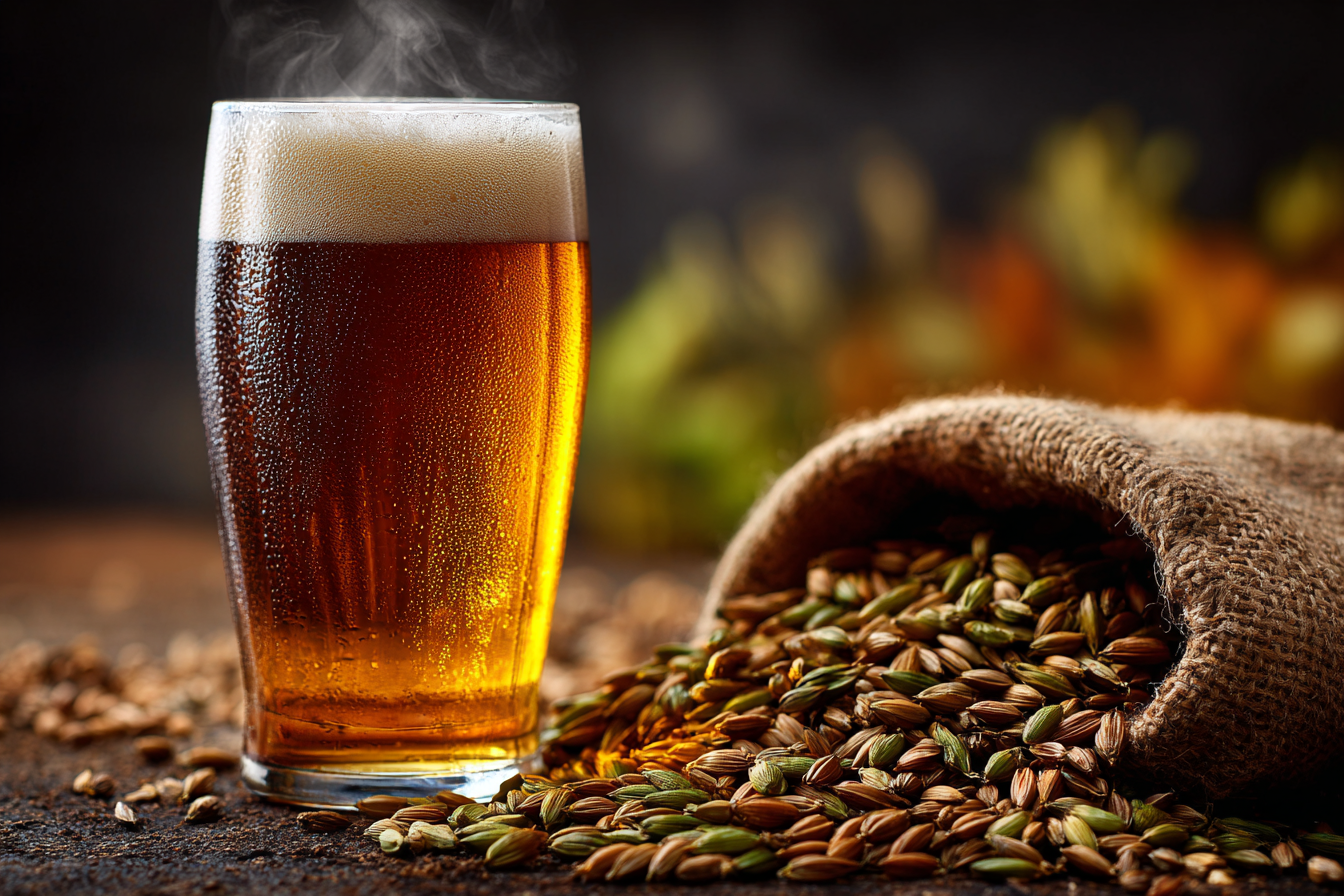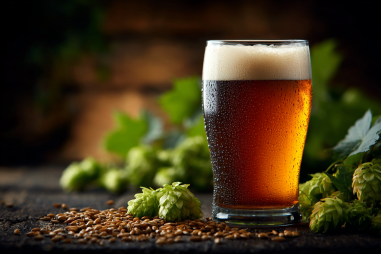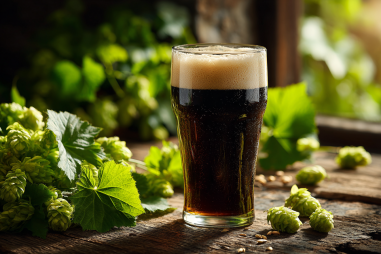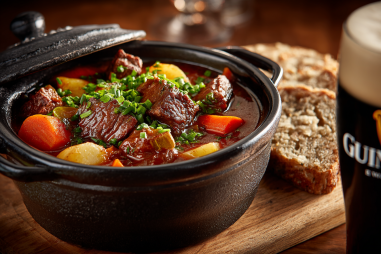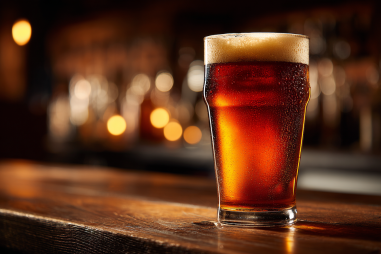The Rye IPA stands out in the crowded world of craft beers with its intriguing aroma profile. Combining the spicy, earthy characteristics of rye malt with the vibrant floral, citrus, and pine notes from hops, a Rye IPA offers a sensory experience that often draws enthusiasts back for another sip. This article dives deep into what makes the aroma of a Rye IPA unique, how various ingredients and brewing techniques shape it, and tips for truly appreciating the complex scents that this beer brings to your glass.
Introduction to Rye IPA Aromas
When you first bring a Rye IPA to your nose, you encounter an intriguing blend of aromas that reflect its dual nature — the rye malt’s spicy warmth alongside the bold, often bright hop character typical of India Pale Ales. Unlike a traditional IPA that primarily showcases hop aromatics, a Rye IPA invites you into a layered olfactory experience. You might detect notes reminiscent of black pepper, clove, and baking spices from the rye, balanced by aromas of grapefruit, pine, floral blossoms, or tropical fruits contributed by the hops.
This marriage of rye malt and diverse hop varieties creates a dynamic and evolving aroma that can appeal to both malt-forward beer lovers and hop enthusiasts alike, making Rye IPAs a fascinating category to explore.
Impact of Rye Malt on Aroma
Rye malt is one of the defining components of a Rye IPA’s aroma. Its contribution is much more than just structural, as it lends a distinctive character that sets the beer apart from standard IPAs brewed primarily with barley malt.
Rye imparts a spicy, earthy note that’s often described as peppery or even slightly herbal. This spice character is a hallmark scent, providing warmth and complexity to the beer’s nose. Depending on the quantity and the rest of the malt bill, rye can also contribute subtle grainy or biscuit-like aromas that provide a rich, grounded base beneath the hop aromatics.
Because rye has higher protein content and a different enzymatic profile compared to barley, it also influences the mouthfeel and aroma release. This organic complexity enhances the beer’s aromatic layers, inviting drinkers to explore nuances beyond just hops.
Common Hop Aromas Found in Rye IPA
Hops are the aromatic stars of any IPA, and Rye IPAs are no exception. However, brewers often complement the spicy rye malt with hop selections that can cut through or harmonize with that spiciness in creative ways.
Common hop aroma profiles you might encounter in a Rye IPA include:
- Citrusy: Bright notes of grapefruit, lemon, orange zest, and even lime help lift the rye’s earthiness.
- Pine: Classic pine and resinous characteristics provide a refreshing, forest-like backdrop.
- Floral and Herbal: Soft floral scents or subtle herbal tones can accentuate the rye’s spice, creating an aromatic bouquet that feels garden-fresh.
- Tropical and Fruity: Mango, passionfruit, and guava hops add a sweet, exotic contrast that plays beautifully against the malt’s dryness.
Hop varieties such as Cascade, Centennial, Amarillo, Citra, and Simcoe are favorites, but brewers might also experiment with newer or regional hops to produce unique aromatic blends that complement the rye malt.
How Brewing Techniques Affect Aroma
The aromatic characteristics of a Rye IPA are not just a factor of ingredients, but also how the beer is brewed. Several brewing choices influence how aromas develop and present themselves in the final product.
- Mash Temperature: A lower mash temperature tends to produce a lighter body and can allow hop aromas to shine, while a higher mash temperature often enhances malt complexity, potentially intensifying the rye’s spicy notes.
- Hop Addition Timing: Late hopping, including whirlpool and dry hopping, is crucial to preserving the delicate hop aromas. These techniques introduce strong volatile oils directly into the beer without harsh bitterness, maintaining a fresh hop profile.
- Fermentation: The yeast strain and fermentation temperature can subtly influence aroma. Some ale yeasts preserve hop and malt aromas, while others might add fruity esters that complement the existing scent profile.
- Water Chemistry: The ionic makeup of brewing water can affect how malt and hops are balanced, which indirectly shapes the perceived aroma.
Each of these steps can be fine-tuned to produce a Rye IPA with a distinct aromatic fingerprint that depends on the brewer’s vision.
Tips for Evaluating Rye IPA Aroma
To fully appreciate the aromatic complexity of a Rye IPA, here are some helpful tips for evaluation:
- Use the right glassware: A tulip or snifter glass concentrates aromas, channeling them towards your nose.
- Pour gently and swirl: Pour the beer slowly to avoid excessive carbonation loss, then gently swirl the glass to release volatile aromatics.
- Sniff deeply and in layers: Take short, repeated sniffs to pick up on different aroma notes rather than one long sniff that can overwhelm your senses.
- Note the evolution: Aroma will develop and change as the beer warms, so revisit your sniff throughout the tasting.
- Compare with other IPAs: If possible, smell a standard IPA alongside your Rye IPA to highlight how the rye malt modifies the aromatic profile.
Pairing Aromas with Different Foods
The aromatic complexity of a Rye IPA makes it an excellent companion for food pairings that bridge spicy, savory, and bright flavors. Here are some pairing ideas based on the beer’s aroma characteristics:
- Spicy and earthy rye aromas: Pair well with smoked meats, barbeque, or dishes seasoned with black pepper to echo the beer’s spice notes.
- Bright citrus and pine hop aromas: Complement seafood, grilled chicken, or salads with citrus-based dressings to match the fresh hop scents.
- Floral and herbal hop notes: Pair with herb-roasted vegetables or lighter cheeses like goat cheese, which highlight herbal nuances.
- Tropical fruit aromas: Go well with spicy Asian cuisine or fruit-based desserts, where the sweet hop tones balance heat or sweetness.
By considering the Rye IPA’s aromatic profile, you can create enjoyable food pairings that elevate both the beer and the dishes you’re serving.
Savoring the Scents of Rye IPA
The aromatic adventure of a Rye IPA offers beer lovers a multifaceted experience — from the spicy warmth of rye malt to the diverse and vivid hop bouquet. Understanding how ingredients and brewing methods shape these aromas will enrich your appreciation every time you lift the glass.
Next time you have a Rye IPA, take a moment to fully engage with its aroma. Let the spicy notes motivate your anticipation, follow the citrus and pine hop scents dancing on your nose, and embrace the evolving character as the beer warms. With attention and curiosity, the Rye IPA’s aromatic layers reveal a delightful complexity that enhances every sip.

